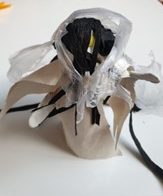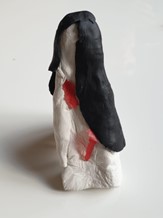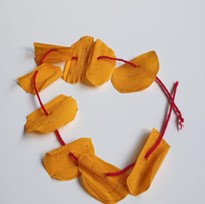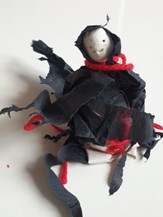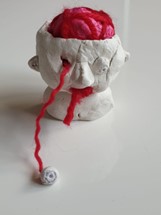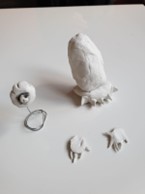Activity 21: Monsters: Discovering the Imaginations of Monsters of Our Cultures
Overview of the activity
Participants will sculpt a monster that is inspired by their cultural heritage. The different monsters that will be crafted illustrate the cultural diversity present in different representations, conceptualizations and functions of monsters.
Objectives
- Discover monsters as cultural heritage.
- Become aware of the different roles of monsters in societies.
- See the common points between the different monsters in the exhibition.
- Mobilize what we know about cultural heritage in a playful, subjective way.
- Become aware of the subjective/emotional component of cultural heritage.
| Duration (in minutes) | Min/max number of participants | Room/space requirements |
| 90 minutes |
|
The activity can be carried out face to face or online. If face to face, we need a space large enough to allow people to have the room to build their monster and to make the exhibition. If online, they can draw their monsters instead of building them |
| Minimum knowledge requirements of participants | Preparation | |
| This activity is mostly verbal, so it helps if participants have a common language. Participants must know of at least one monster related to their culture. | Place a few tables and chairs in a circle around the supplies, which you can place on a table or directly on the floor. |
Materials needed
- Modelling clay
- Markers
- Wire
- Newspaper
- Glue
- Wool
- Scissors
- Paper
- Paperboard
- Labels with body parts (right leg, left leg, torso, mouth, eyes, etc.) – one set per group
Instructions
- Ask participants to think of a monster related to their culture (the monster should be an imaginary creature, such as a vampire or werewolf).
- Ask them to build this monster using the materials provided and then place it on a table to be displayed.

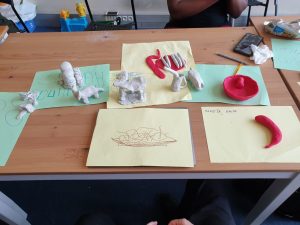
- Once all the monsters have been created, ask the participants, in turn, to tell the others the story of this monster in the first-person singular (e.g. I am …; I live in …; I do …; People tell me …; People like me or are afraid of me because …). Let people ask the monster questions to learn more about it, curiosity is welcome.
- Once each monster has introduced itself, ask people if they can categorize the different monsters according to a system of classification (role, appearance, meaning, anthropological function, etc.). Place the different monsters in the exhibition according to the categories.
- List together the different roles and functions of the monsters present and ask the group to look for other possible ones. You will find some examples below in ‘Complementary material’.
If you still have time, energy and enough participants, you can create a joint monster.
- Create groups of at least 4 participants.
- Give each group a bag or hat containing the labels, sheets of paper and a sheet of flipchart paper.
- Tell participants that they will be creating monsters in groups. Ask each participant to draw a label that represents a body part.
- Once everyone has a body part assigned, each person draws their part on a sheet of paper in any way they choose (e.g. for the word ‘left arm’ it could be an arm, a tentacle, a robot arm), letting their imagination run wild. Participants then cut out their part and glue it to their group’s flipchart to create a unique monster for each group.
- Finally, each group must imagine the story, the characteristics and the role of the monster created.
- Make a final presentation of the monsters, group by group.
Learning outcomes/evidence collected
The monsters produced
Complementary material
You might want to open a discussion about the different examples of typical roles of monsters: promoting specific moral values, educating children, explaining physical or metaphysical phenomena, facilitating mourning and loss, giving an origin to practices and events, etc.
Evaluation
Teaching tips, stories and experiences during piloting
- Be aware and pay attention to cultural differences and similarities arising during this exercise.
- If participants have difficulty expressing themselves or cannot find a monster, feel free to suggest that they use their phones to search on the internet for a monster that they can show the group.
- If you don’t have the necessary materials, you can ask them to draw the monster.
- The last part of the activity (the collective monster) is optional and can be put aside if you are short of time.
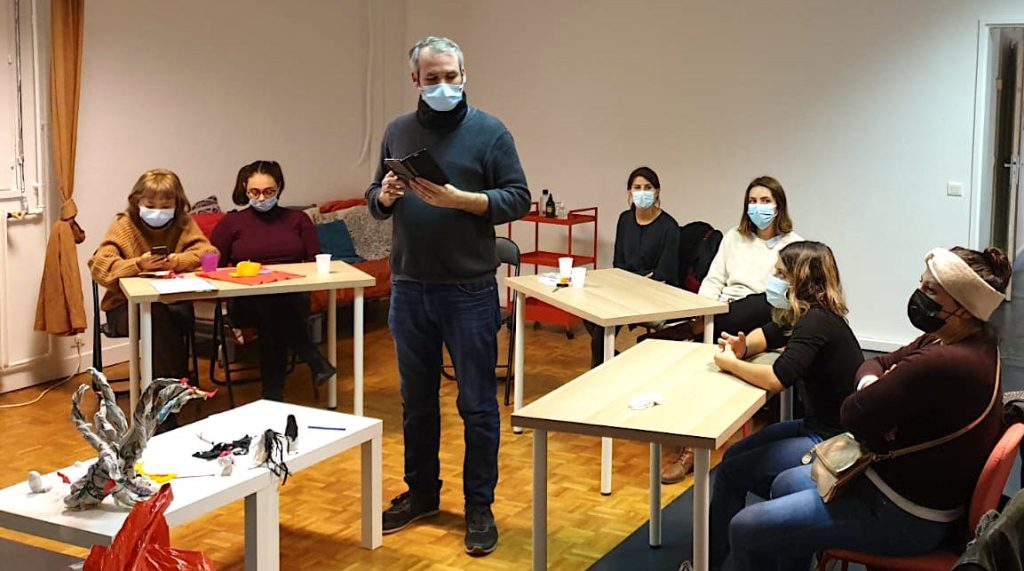
Additional resources
